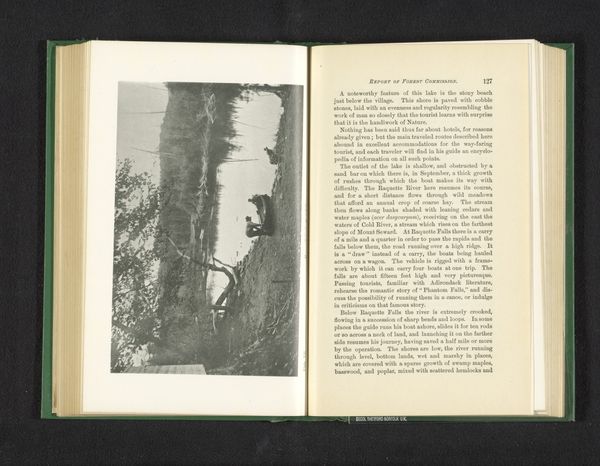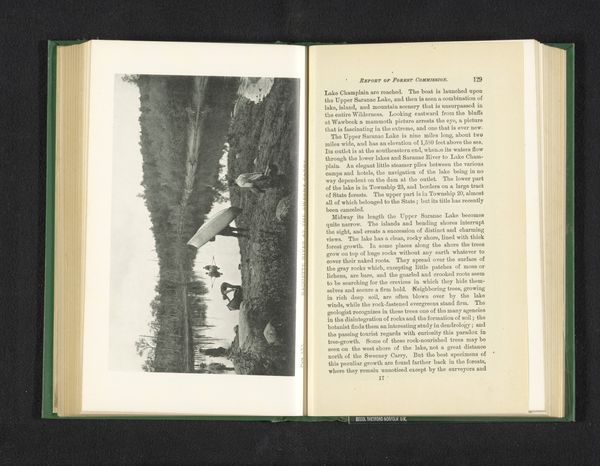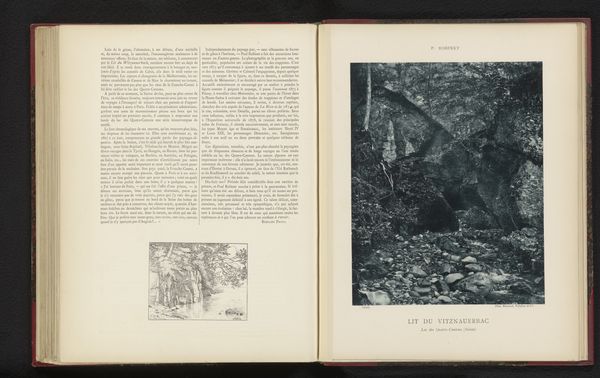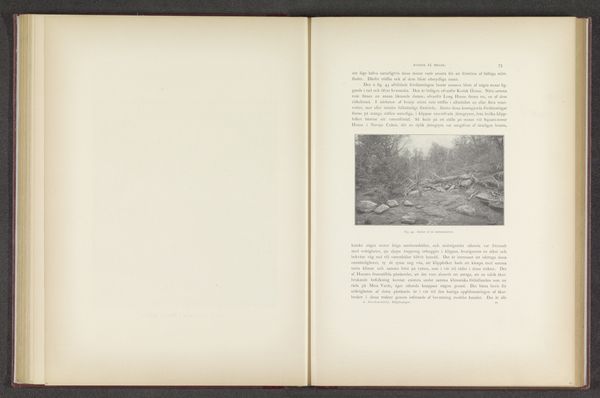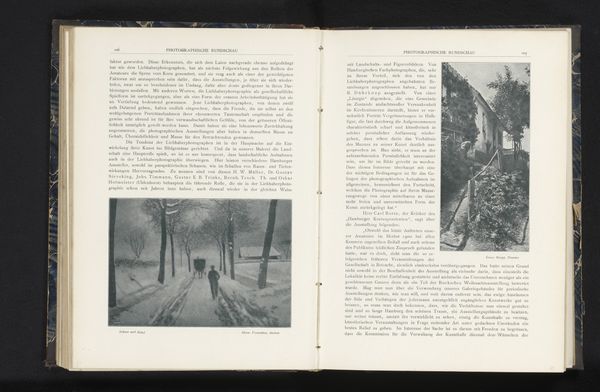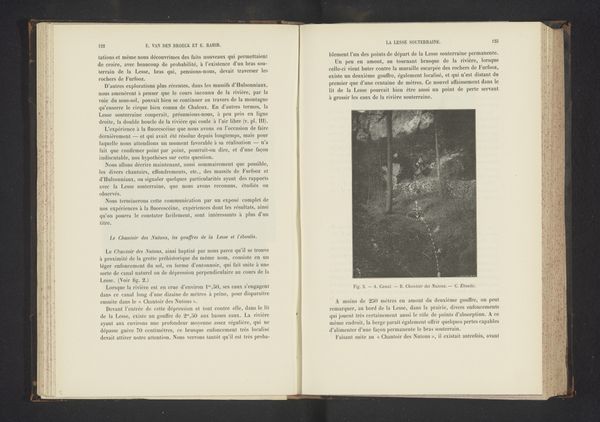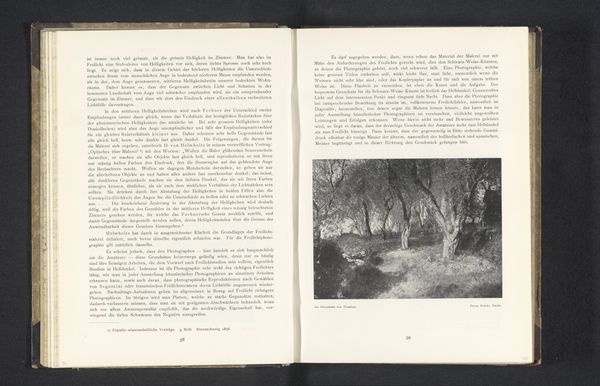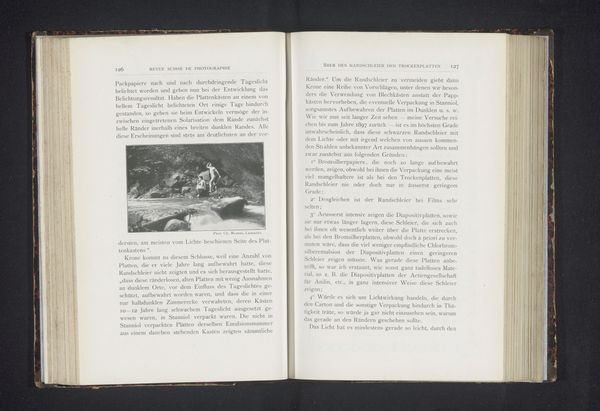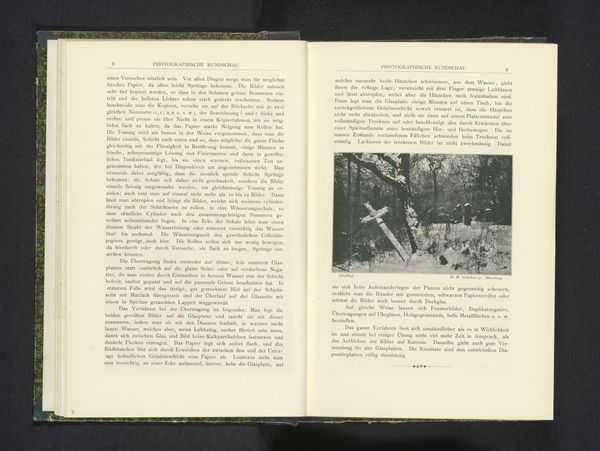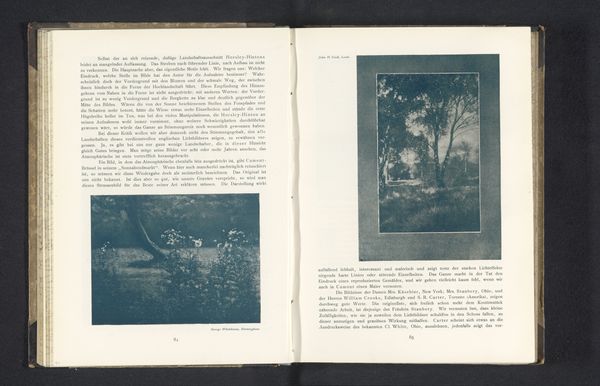
print, photography, gelatin-silver-print
#
portrait
# print
#
landscape
#
photography
#
gelatin-silver-print
Dimensions: height 146 mm, width 111 mm
Copyright: Rijks Museum: Open Domain
Curator: Today, we're looking at Edward Steichen's gelatin-silver print, "Beekje in een bos," dating from before 1901. Editor: There’s something so still and reflective about this scene—almost haunting in its monochrome palette. It feels very dreamlike, especially with the blurred focus. Curator: Absolutely. Steichen's printing process here is crucial; he used gelatin silver, which allowed for that high level of detail but also manipulation. Prints like this highlight how photography was shifting from documentation to art form through labor-intensive processes, blurring the lines between high art and craft. The materiality itself communicates a handcrafted essence. Editor: I see that—and it immediately strikes me how this pre-dates, yet anticipates, the modernist concern with capturing subjective experience. Considering Steichen was part of the Photo-Secession movement, it’s fascinating to think about this work as a challenge to the established, more rigid, photographic norms of his time. He’s pushing at the boundaries of representation. Curator: The print is the artifact of both technological development and intentional labor; considering who has had access to that technology at different times, even informs this dream-like quality that reflects a particular mode of leisure and escape. This speaks to production processes, as a social act and its place in consumption economies. Editor: It becomes interesting to look at who had access to leisurely escapes during that era. Was this tranquility accessible to everyone? How does gender or class intersect with how we perceive a quiet scene like this? Placing the photograph in its social context creates layers of interpretation. Curator: Looking at the composition from the point of view of consumption practices emphasizes labor and industrial means. Editor: Exactly. It invites a broader discussion around historical representation, identity, and the politics embedded within landscape imagery. The quiet stillness suddenly starts speaking volumes, right? Curator: Seeing it from both angles gives me insight. Considering this image through the process and materiality deepens the understanding. Editor: I agree—by combining close observation and contextual digging, the emotional impact really hits differently!
Comments
No comments
Be the first to comment and join the conversation on the ultimate creative platform.
